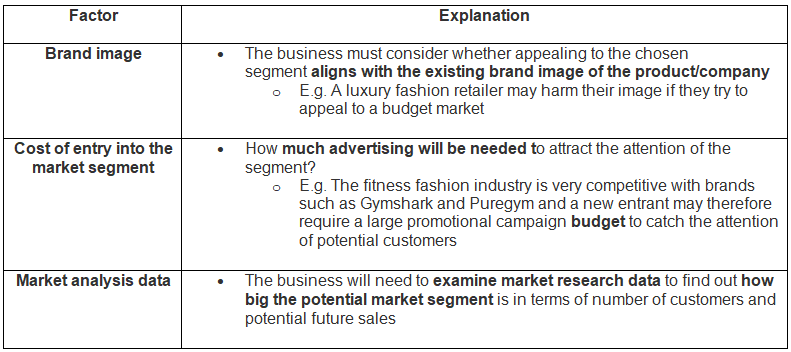Class 10 Exam > Class 10 Notes > Business Studies for GCSE/IGCSE > The Process of Market Segmentation
The Process of Market Segmentation | Business Studies for GCSE/IGCSE - Class 10 PDF Download
An Introduction to Market Segmentation
- Market segmentation involves dividing a single market into submarkets or 'segments',
- Each characterized by slightly different consumer traits.
- Firms often segment their markets based on various factors like geographical location, demographics, behavior, lifestyle, age, or gender.

- The market for products like crisps is not homogeneous; instead, it's segmented into various submarkets:
- Dinner party snacks, including brands like Walkers Sensations, Pringles, and Burts, are tailored for middle to upper-income earners or professionals seeking premium quality at premium prices.
- Health-conscious crisps such as Walkers Lite, Walkers Baked, and Revita Lite cater to consumers focused on healthy eating.
- Lunch box value snacks like multipacks and Hoola Hoops are aimed at families and the broader mass market, offering affordability and convenience.
The Advantages & Disadvantages of Market Segmentation

Recommending an Appropriate Method of Segmentation
- The choice of market segmentation method is contingent upon the nature of the business itself.
- Industry-specific segmentation examples include:
- In the cosmetic industry, products may target specific genders, like the rise of makeup products tailored for men such as 'Guyliner'.
- A bespoke watchmaker might segment based on income levels, focusing on affluent customers who can afford their handmade, niche timepieces.
- A fitness boot camp business could segment based on lifestyle preferences, catering to individuals seeking to enhance their fitness levels.
- Before selecting a suitable market segmentation approach, businesses must also take into account several factors.
Question for The Process of Market SegmentationTry yourself: Which factor is NOT commonly used for market segmentation?View Solution
Factors Affecting Choice of Market Segmentation

The document The Process of Market Segmentation | Business Studies for GCSE/IGCSE - Class 10 is a part of the Class 10 Course Business Studies for GCSE/IGCSE.
All you need of Class 10 at this link: Class 10
|
70 videos|93 docs|26 tests
|
FAQs on The Process of Market Segmentation - Business Studies for GCSE/IGCSE - Class 10
| 1. What is market segmentation? |  |
Ans. Market segmentation is the process of dividing a market into distinct groups of buyers who have different needs, characteristics, or behaviors. This allows companies to tailor their marketing strategies and products to meet the specific needs of each segment.
| 2. Why is market segmentation important? |  |
Ans. Market segmentation is important because it helps companies identify and target specific customer groups more effectively. By understanding the unique needs and preferences of each segment, companies can create tailored marketing campaigns that are more likely to resonate with their target audience.
| 3. What are some common methods of market segmentation? |  |
Ans. Some common methods of market segmentation include demographic segmentation (based on factors such as age, gender, income, etc.), psychographic segmentation (based on lifestyle, values, attitudes, etc.), behavioral segmentation (based on purchasing behavior), and geographic segmentation (based on location).
| 4. How can companies determine which market segments to target? |  |
Ans. Companies can determine which market segments to target by conducting market research to understand the needs and preferences of different customer groups. They can also analyze data on customer behavior, demographics, and psychographics to identify segments that are most likely to respond positively to their products or services.
| 5. How can companies effectively reach and communicate with different market segments? |  |
Ans. Companies can effectively reach and communicate with different market segments by developing targeted marketing campaigns that speak to the specific needs and preferences of each segment. This may involve using different messaging, channels, and promotional tactics to engage with each group effectively.
Related Searches















